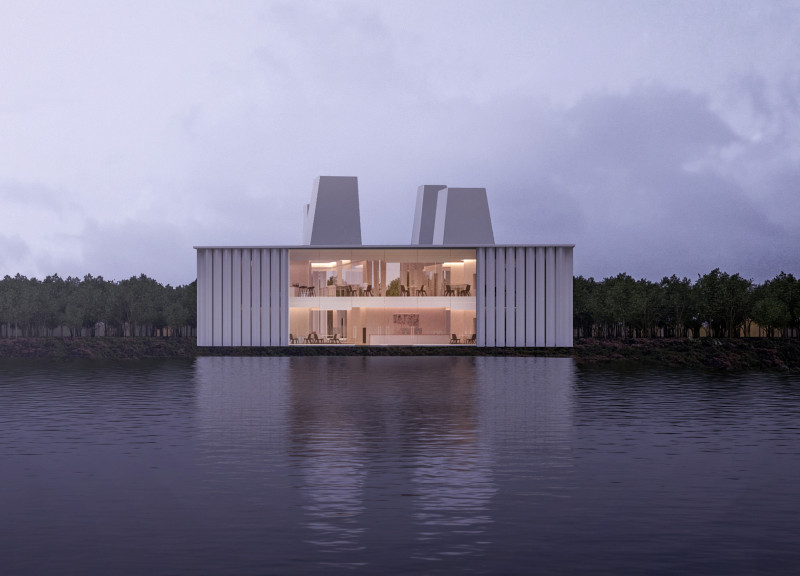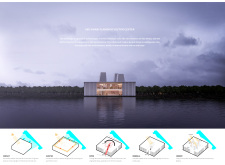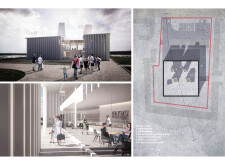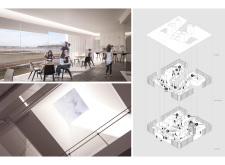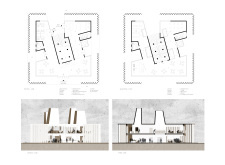5 key facts about this project
The Abu Dhabi Flamingo Visitor Center is located in the ecological landscape of the Al Wathba Wetland Reserve. It serves as a space for education and relaxation, focused on the unique wildlife of the area, particularly the flamingos that inhabit the wetlands. The design draws inspiration from the grace of these birds, creating a connection between the architecture and the natural world.
Design Concept
The building features forms that reflect the elegance of flamingos in motion. Tall chimneys rise upward, echoing the vertical lines of the surrounding greenery. The choice of light-colored materials not only enhances the building's appearance but also helps in cooling the interior. This approach aligns with the local climate and cultural context, allowing the center to blend into its environment.
Environmental Integration
A key focus of the design is addressing the region's high temperatures and bright sunlight. To combat these challenges, the center includes shaded areas like colonnades, which protect visitors from direct sun while still offering expansive views of the wetlands. By increasing cloister spaces, the design encourages comfort and interaction with the outdoor setting, showcasing a thoughtful consideration of both aesthetics and practicality.
Spatial Organization
The visitor center is organized over two levels to improve accessibility and visitor experience. The first floor contains important visitor amenities such as a gift shop, a reception area, and information services. This layout ensures that guests feel welcomed from the moment they enter. The second floor features display areas and a terrace, allowing visitors to appreciate the landscape and engage with its educational offerings.
Architectural Details
Specific design elements enhance the relationship between visitors and nature. Umbrella-shaped columns provide shade and relief from the sun, while an atrium encourages airflow and natural lighting. This design also includes dedicated spaces for training and refreshments, reflecting the center’s commitment to promoting environmental awareness and sustainability. By incorporating these features, the visitor center becomes more than just a place to visit; it supports learning and appreciation of the wetland ecosystem.
The relationship between interior spaces and the outdoors invites interaction, emphasizing the center’s focus on education and conservation. Each detail serves to create an environment that fosters awareness of both architecture and nature.


